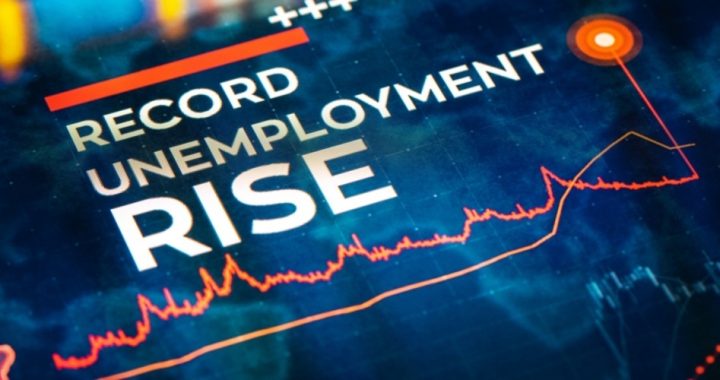
The latest tally of unemployment claims for the week ending May 16 added another 2.4 million, a decrease from the previous week but one that raised the number of claims since March 1 to nearly 40 million.
The newest figures reported this morning carried the usual note: “The COVID-19 virus continues to impact the number of initial claims and insured unemployment.”
“Continues to impact” is something of an understatement given the wreckage the Chinese Virus and the ensuing lockdown has caused.
Even worse, U.S taxpayers subsidized it all by sending money to the virus lab in China from which the virus escaped.
The Figures
Last week’s figure, 2.438 million, is 249,000 less than the revised figure of 2.687 million for the week ending May 9, a welcome 9.2-percent drop.
The unemployment rate for the week ending May was 17.2 percent, the department reported, an increase from the previous week’s rate of 15.5 percent.
For the week ending May 2, 6.12 million claimed Pandemic Unemployment Assistance in 27 states, while 162,727 individuals in 15 states claimed Pandemic Emergency Unemployment Compensation.
The sum of the weekly unemployment claims since the pandemic began in early March is now well more than 10 percent of the American population.
March 7 — 211
March 14 — 282
March 21 — 3,307
March 28 — 6,867
April 4 — 6,615
April 11 — 5,237
April 18 — 4,442
April 25 — 3,846
May 2 — 3,176
May 9 — 2,687
May 16 — 2,438
Total — 39.1 million
The top five states suffering major increase in claims were these:
Florida — 48,222
Georgia — 14,420
Washington — 8.615
New York — 4,309
South Dakota — 1,340
Others enjoyed major decreases:
California — 103,590
Texas — 102,382
Oklahoma — 54,806
North Carolina — 28,602
Missouri — 21,382
Unemployment rates across the states, a week behind claims data in the department’s report, were, again, a shocking reminder of just how much damage the virus and lockdown has done.
The top 10 unemployment rates for the week ending May 2 range from Nevada’s 23.5 percent, an increase from the previous week’s 22, to Georgia’s 18.5, which dropped from 20.
May 2 April 25
Nevada 23.5 22
Michigan 22.6 23.1
Washington 22.1 18
Rhode Island 19.9 20.6
New York 19.6 18.6
Connecticut 19.3 18
Puerto Rico 19.2 **
Mississippi 18.8 **
Vermont 18.8 20
Georgia 18.5 20.2
** Not on list
A bar chart posted at Trending Economics provides a stark picture of the jobs market.
The unemployment rate between May 2019 and February 2020 hovered between 3.5 and 3.7 percent. In March, it jumped to 4.4 percent. But then came the end of April, after 10 million unemployment claims in March, and then another 20 million by April 30.
By then, the unemployment rate was 14.7 percent, the highest since 1940 when 14.6 percent of Americans were unemployed.
It might well increase to 16 percent by May 31.
Americans Paid for the Wreckage
Sad thing is, Americans paid for the damage the virus and lockdowns have done.
U.S. taxpayers, as The New American has reported, subsidized the poorly-run lab that loosed the virus in Wuhan, China, from whence it spread across the globe at terrifying speed after Chinese Communist officials lied about it and permitted the Lunar New Year’s revelers to flood the city.
One of the U.S. agencies that sent money to the Wuhan Institute of Virology, the site of the lab from which the virus escaped, is Dr. Anthony Fauci’s National Institute of Allergy and Infectious Diseases, a subsidiary of the National Institutes for Health.
A top member of the Trump administration’s virus task force, Fauci backs a controversial form of research into viruses called “gain of function.” The lab in Wuhan was conducting GOF studies with U.S. taxpayer subsidies until April 24, when NIH canceled them, Newsweek reported:
The first part began in 2014 and involved surveillance of bat coronaviruses, and had a budget of $3.7 million…. This part of the project was completed in 2019.
A second phase of the project, beginning that year, included additional surveillance work but also gain-of-function research for the purpose of understanding how bat coronaviruses could mutate to attack humans.”
It did attack humans.
But aside from 1.6 million cases and nearly 100,000 dead in the United States alone, the virus and statists it empowered have wrecked the U.S. economy.
Image: da-kuk/iStock/Getty Images Plus
R. Cort Kirkwood is a long-time contributor to The New American and a former newspaper editor.



